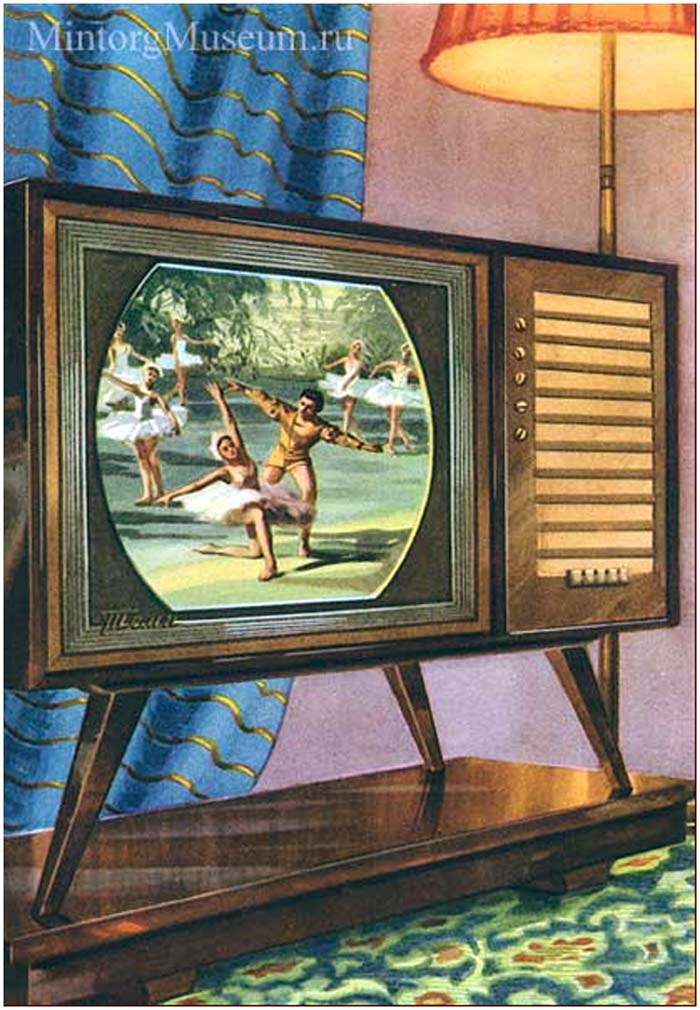Temp color television receiver.
Color TVsDomesticThe Temp-22 television receiver for color images has been prototype since the 1st quarter of 1959. Since 1958, in the USSR, massive experiments began in the reception and transmission of color images. Exhibited at the All-Union Exhibition of Achievements of the National Economy in Moscow in 1959, a prototype of a color TV - "Temp-22" was developed in 2 versions. The first version had its own speaker system, and the second version was designed for external use. The TV received black and white and color images on a 53LK4Ts type three-color masked kinescope. Screen size 380x490 mm. The TV set with the AU had 28 radio tubes, two 3-watt loudspeakers. The power consumed by the device did not exceed 300 W. The TV was assembled on the basis of the serial American color TV Admiral. The kinescope contains three spotlights and a screen consisting of a large number of dots of colored phosphors (red, blue and green glow) and a special metal mask with a large number of holes. The electron beam of each projector passes through the hole of the mask and hits the corresponding point of the phosphor for the given projector. Thus, one electron beam should strike only at the points of the red phosphor, the second only at the points of the blue phosphor, and the third only at the points of the green phosphor. As a result, three spotlights create independently and simultaneously red, blue and green images, which together create an image of the transmitted object in natural colors. The TV channel switch, brightness and volume control are brought out to the upper part of the front panel of the case, and a power switch is located under the screen. All other control knobs are located on the right side and back walls of the case, two loudspeakers are installed on the left side wall. The TV is easy to operate and has, compared to b / w TVs, two additional controls - phase control and color tone control. The TV has 30 (28) radio tubes, 16 germanium diodes. The circuit uses: inertial automatic frequency control of the subcarrier generator, key automatic gain control, inertial synchronization circuit, noise-immune selector, stabilization of the accelerating voltage, etc. Basic technical data: Sensitivity for image signal channels 100 μV. Image clarity: horizontal 400 lines, vertical 400 lines. The band of reproducible sound frequencies is 60..8000 Hz (left photo). The rated output power of the low frequency amplifier is 2 W. Power is supplied from an alternating current network of 110, 127 or 220 V. Power consumption 340 watts. Image dimensions 395x470 mm. The dimensions of the case are 1030x712x647 mm. At the beginning of 1960, 50 television sets were manufactured for experiments on receiving color television programs, and in the middle of 1960 the experimental ones were discontinued.